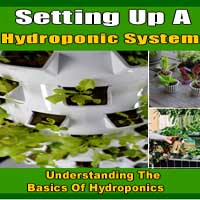


Protecting Our Planet Through Sustainable Practices

Environmental benefits are the positive outcomes of sustainable practices that reduce harm to the Earth's ecosystems. These benefits play a crucial role in preserving our planet's health and ensuring a sustainable future for generations to come. In this article, we will explore the significance of environmental benefits, the strategies employed to achieve them, and the positive impacts they have on our world.
The Significance Of Environmental Benefits
Environmental benefits are critical for several reasons:
Ecosystem Health: By reducing pollution, habitat destruction, and resource depletion, environmental benefits help maintain the health and diversity of ecosystems.
Climate Change Mitigation: Sustainable practices that reduce greenhouse gas emissions and promote carbon sequestration are essential for combating climate change.
Resource Conservation: Environmental benefits help protect and conserve vital resources like water, soil, and biodiversity.
Human Health: A cleaner environment means better air and water quality, which directly affects human health.
Strategies For Achieving Environmental Benefits
Numerous strategies and practices contribute to environmental benefits:
Renewable Energy: Transitioning to renewable energy sources like solar, wind, and hydropower reduces greenhouse gas emissions and lessens the environmental impact of energy production.
Waste Reduction: Reducing, reusing, and recycling materials minimizes waste and lowers the environmental footprint of resource extraction and disposal.
Sustainable Agriculture: Practices like organic farming, crop rotation, and agroforestry help maintain soil health, reduce chemical use, and preserve biodiversity.
Green Building Design: Energy-efficient and sustainable building designs can lower energy consumption and minimize the use of natural resources.
Conservation And Restoration: Protecting and restoring natural habitats can preserve biodiversity, improve water quality, and sequester carbon.
Positive Impacts Of Environmental Benefits
Environmental benefits have far-reaching positive impacts:
Climate Change Mitigation: Reduction in greenhouse gas emissions helps slow global warming and mitigates the effects of climate change.
Cleaner Air And Water: Sustainable practices improve air and water quality, reducing health risks and enhancing the quality of life.
Biodiversity Conservation: Preserving natural habitats and adopting sustainable land-use practices safeguard diverse ecosystems and their inhabitants.
Resource Availability: Environmental benefits contribute to the long-term availability of essential resources like clean water, arable land, and biodiversity for food security.
Economic Opportunities: Green technologies and sustainable practices create jobs, stimulate economic growth, and foster innovation.
Challenges And Future Goals
While significant progress has been made in realizing environmental benefits, challenges remain. Resistance to change, economic constraints, and a lack of global coordination pose hurdles.
Looking to the future, the goal is to integrate sustainability into all aspects of human life. Policies, regulations, and international agreements can further promote environmental benefits, and technological advancements will continue to drive progress in this area. By embracing environmental benefits as a collective responsibility, we can ensure the preservation and sustainability of our planet for current and future generations.
Environmental benefits are fundamental to maintaining a healthy planet. By adopting sustainable practices and making responsible choices, we can protect and enhance the health of our ecosystems, combat climate change, and create a more sustainable and harmonious relationship with the Earth. These benefits are not just for the environment but also for the well-being and prosperity of humankind.
Paving The Way For A Smarter World
 Enhancing Everyday Life
Enhancing Everyday Life
Intelligent solutions are all around us, making our daily routines more convenient and enjoyable. Take, for example, the personal virtual assistants like Siri and Alexa, which have become integral parts of many households. These AI-driven solutions can answer questions, provide weather updates, control smart home devices, and even play your favorite music with a simple voice command. They are a prime example of how intelligent solutions have become an indispensable part of our lives, adding a layer of convenience and personalization to our everyday experiences.
Efficiency In Business
In the corporate world, intelligent solutions are optimizing business operations, boosting productivity, and improving decision-making processes. Data analytics, for instance, helps companies gain insights into customer behavior and market trends. This, in turn, allows for more informed and targeted marketing strategies, ultimately leading to better outcomes and growth. Additionally, the automation of repetitive tasks through intelligent solutions can free up employees to focus on more creative and strategic aspects of their work.
Healthcare And Well-Being
The healthcare industry is witnessing a revolution through the application of intelligent solutions. Telemedicine, for instance, allows patients to receive medical consultations from the comfort of their homes. Wearable health monitoring devices provide real-time data to both patients and healthcare professionals, helping to manage chronic conditions and improve overall health. Artificial intelligence is also aiding in the analysis of medical images, enabling more accurate diagnoses and treatment planning.
Transportation And Mobility
Intelligent solutions have the potential to redefine the way we move from one place to another. Autonomous vehicles are a prominent example. These vehicles use sensors, cameras, and AI algorithms to navigate roads and make split-second decisions, aiming to increase safety and efficiency in transportation.


Paving The Way To A Sustainable Future
 1. Electric Vehicles (EVs): Electric vehicles have gained significant popularity as a greener alternative to traditional gasoline and diesel-powered cars. EVs run on electricity stored in rechargeable batteries, producing zero tailpipe emissions. The adoption of electric cars is on the rise, thanks to advancements in battery technology, extended driving ranges, and the expansion of charging infrastructure. EVs significantly reduce carbon emissions, air pollution, and dependence on fossil fuels.
1. Electric Vehicles (EVs): Electric vehicles have gained significant popularity as a greener alternative to traditional gasoline and diesel-powered cars. EVs run on electricity stored in rechargeable batteries, producing zero tailpipe emissions. The adoption of electric cars is on the rise, thanks to advancements in battery technology, extended driving ranges, and the expansion of charging infrastructure. EVs significantly reduce carbon emissions, air pollution, and dependence on fossil fuels.
2. Hybrid Vehicles: Hybrid vehicles combine traditional internal combustion engines with electric propulsion systems. These vehicles can operate on electric power at low speeds and switch to the internal combustion engine at higher speeds or when additional power is needed. Hybrid technology improves fuel efficiency and reduces emissions, making it an effective transition solution for those not yet ready to fully commit to electric vehicles.
3. Public Transportation: Efficient and eco-friendly public transportation systems, such as buses and trains, play a vital role in reducing the number of private vehicles on the road. Modern public transportation options often include electric or hybrid buses, which produce fewer emissions and offer a more sustainable means of moving people within urban areas.
4. Bicycles And Electric Bikes: Cycling and electric biking are eco-friendly, healthy, and efficient modes of transportation. These options produce zero emissions and promote physical activity, reducing the overall carbon footprint associated with commuting. Many cities worldwide are investing in cycling infrastructure to encourage this sustainable means of transportation.
Innovations For A Sustainable Future
 The Importance Of Water-Saving Technologies
The Importance Of Water-Saving Technologies
Water is a finite and precious resource, and the need for water-saving technologies is underscored by several key factors:
Water Scarcity: Many regions worldwide face water scarcity, where the demand for water exceeds the available supply. This challenge is exacerbated by population growth, urbanization, and climate change.
Sustainability: Sustainable water management practices are crucial to ensure the long-term availability of clean water for future generations and to protect ecosystems that rely on water resources.
Efficiency: Efficient water use is not only environmentally responsible but also financially advantageous, as it leads to cost savings for individuals, businesses, and communities.
Water-Saving Technologies And Innovations
Low-Flow Fixtures: Low-flow faucets, showerheads, and toilets use innovative design and technology to reduce water consumption without sacrificing performance. These fixtures limit water flow while maintaining water pressure.
Smart Irrigation Systems: Advanced irrigation technologies use sensors and data analysis to optimize watering schedules and ensure that landscapes receive the right amount of water. This reduces water wastage from over-irrigation.






Shaping A Sustainable Future
 Waste Reduction: Eco-friendly design encourages the reduction of waste at all stages, from manufacturing and construction to product use and disposal. This can include designing for disassembly and recycling.
Waste Reduction: Eco-friendly design encourages the reduction of waste at all stages, from manufacturing and construction to product use and disposal. This can include designing for disassembly and recycling.
Biomimicry: Biomimicry is a concept in eco-friendly design where designers draw inspiration from nature's solutions to complex problems. By imitating nature's strategies, designers can create more sustainable and efficient products and buildings.
Energy-Efficient Appliances and Systems: In architecture and interior design, eco-friendly design often incorporates energy-efficient appliances, lighting, and heating, ventilation, and air conditioning (HVAC) systems.
Water Efficiency: Eco-friendly design includes water-saving features such as low-flow faucets, dual-flush toilets, and rainwater harvesting systems. These measures reduce water consumption and promote water conservation.
Adaptive Reuse: In architecture and interior design, adaptive reuse is a strategy that involves repurposing existing buildings or structures rather than demolishing and building anew. This reduces waste and preserves historical and cultural significance.
The Power Of Smart Home Upgrades
 One of the primary advantages of smart home upgrades is the convenience they bring to our daily lives. Imagine being able to control your lights, thermostat, and even your coffee maker with a simple voice command or a tap on your smartphone. With the help of devices like smart speakers and home automation systems, you can create a truly interconnected living space. Adjusting your home's settings to suit your preferences has never been easier, making everyday tasks more efficient and enjoyable.
One of the primary advantages of smart home upgrades is the convenience they bring to our daily lives. Imagine being able to control your lights, thermostat, and even your coffee maker with a simple voice command or a tap on your smartphone. With the help of devices like smart speakers and home automation systems, you can create a truly interconnected living space. Adjusting your home's settings to suit your preferences has never been easier, making everyday tasks more efficient and enjoyable.
Security And Peace Of Mind
Smart home security is another major draw for homeowners. Advanced security systems equipped with cameras, motion sensors, and doorbell cameras provide real-time monitoring and alerts. This means you can keep a watchful eye on your property, whether you're at home or miles away. Smart locks also add an extra layer of security, allowing you to control access remotely and even provide temporary digital keys to guests.
Energy Efficiency
Smart home upgrades can significantly contribute to reducing your energy consumption and environmental footprint. Smart thermostats, for instance, can create personalized heating and cooling schedules that adapt to your daily routines, resulting in lower energy bills. Moreover, you can monitor and control your energy usage with the help of energy management systems, which offer insights into where and how you can save energy.
Customized Entertainment
Entertainment systems have also undergone a transformation with smart home upgrades. With a single remote control or voice command, you can manage your audio and video equipment, from smart TVs and streaming devices to home theater systems. Integration with virtual assistants like Alexa or Google Assistant allows you to effortlessly switch between your favorite movies, music, and more.